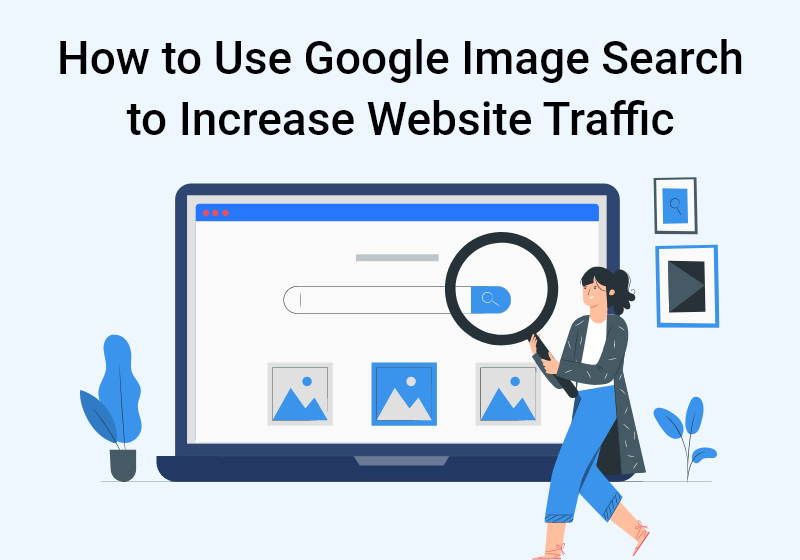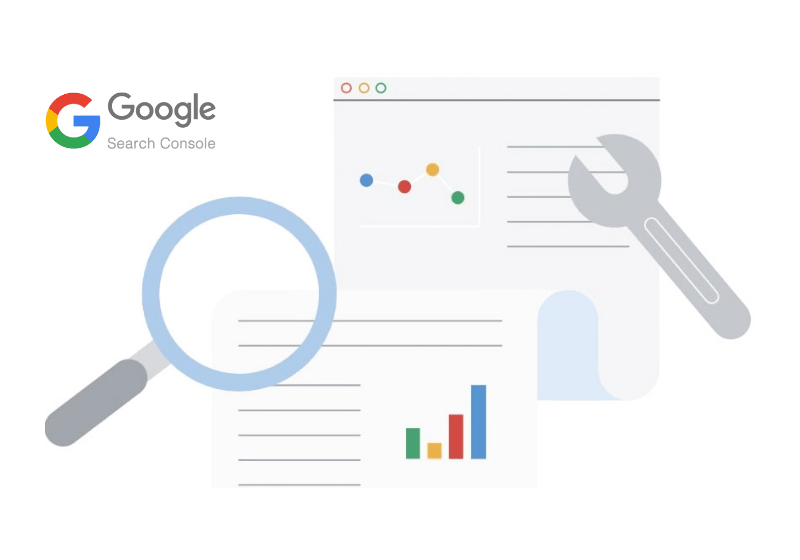
There’s an old saying, “A picture is worth a thousand words”. Information is coming at us from every direction at lighting speed so what better way to grab attention than with enticing images? Images are a great way to spruce up an otherwise long blog, to make social media posts more appealing, and illustrate what you are trying to convey with a data chart or diagram.
Today, the average attention span of a person is only a mere 8 seconds, making this a simple, yet very important, recommendation – add eye catching images to every article or blog you post to your website. Visual search is becoming increasingly more important, and this is very evident in Google’s vision for the future of internet searches. Not too long ago, Google Images got a brand new interface with metadata (data information about other data that provides information like when and how it was gathered making the data easier to find, understand, use, and manage), new filters, and even attribution.
This new interface shows that Google is increasingly becoming more aware of the power of images in relation to searches, and how those images fit into the larger context of things. Put simply, adding images to your site content can result in an increase to your website traffic when combined with image optimization seo.
The majority of search volume today comes from smart devices, and when such a low attention span is taken into consideration, it only makes sense that websites must be able to deliver quick, engaging, and delightful experiences to their users.
As a matter of fact:
- The human brain can process an image in the same amount of time it would take to read 1000 words.
- 90% of data transmitted by the human brain is visual.
- The recall value of visual content after three days is 65%, as opposed to the recall value for written text which is only at 10%.
What is Image SEO?
 The practice of optimizing your website and content images for search engines with appropriate captions, thoughtful alt text, proper file dimensions, and more is known as image SEO. Through the use of image seo best practices, your content becomes easier to interpret for search engine crawlers, giving your website a boost on both search result and image result pages to make your website more discoverable, thereby increasing your website traffic.
The practice of optimizing your website and content images for search engines with appropriate captions, thoughtful alt text, proper file dimensions, and more is known as image SEO. Through the use of image seo best practices, your content becomes easier to interpret for search engine crawlers, giving your website a boost on both search result and image result pages to make your website more discoverable, thereby increasing your website traffic.
Image optimization seo is about more than just getting higher search rankings on Google. Every major search engine shows images in SERPs (search engine result pages), meaning image enhanced SEO is also about better click through rates and visibility. Most people are visual learners, so it’s no mystery why search engine results that are accompanied by images capture attention and get more clicks.
Using Google Image Search to Increase Website Traffic
You may already be aware that SEO, keywords, and outstanding content can drive more traffic to your website, but did you know that images are the secret to traffic generation? Although the importance of images on the web have been underestimated in the past, website images have been getting a lot more attention as of late. The importance of quality web images is growing for several reasons, including the support of user experience and enabling website visitors to find more product options directly from the image search itself.
Google Image Search allows users to search for a term and images related to the text entered into the search box. Google adds more contexts to photos in image search results, providing new opportunities to drive traffic to your website. The Google Knowledge Network pulls information about people, places or things related to the search inquiry and displays the information below the images when you click on them.
Below we’ve listed ways to use Google image optimization to increase Google image search traffic.
- Create unique images
It is highly recommended that you create your own unique images as opposed to using stock photography. If you are showcasing your team on your “About Us” page you don’t want an image of some random group of people.
On the same hand, you need images that are relevant to your blog topics. The images you create should convey the theme of your blog. If you don’t have any images you can use, you can use stock photography as a background to create a unique image of your own. Once you have created the image – whether it’s a graph, diagram, or illustration – you need to optimize it before posting it to your website.
- Add keywords to your content that matches your image
Make sure your keywords match the images you are adding to your content. Name the image file based on the keywords you are using. Be sure to also include the keyword in the title and caption of the image.
- Be sure to scale optimized images
The average person will leave a website that takes longer than 3 seconds to load. Images have a significant impact on the time it takes to load your website. It is critical to your SEO strategy and the user experience of your website visitors that your images are scaled to load quickly. It can cause a serious delay in load time if you try to load an image and then try to display it at a smaller size. As an example, if you are trying to display an image that is a 2500 × 1500 pixel photo with a size of 250 × 150 pixels, it will take a lot longer to display because the entire image still needs to be processed.
Resize the photo to fit the dimensions you want to display. WordPress can automatically resize your image to multiple sizes after upload. This does not mean that the file size is also optimized, however, it just means the size of the displayed image is optimized.
- Use an image sitemap
Submitting an image sitemap with the image URLs to Google can help the search engine find images that may otherwise go undiscovered.
Unlike regular sitemaps that enforce cross-domain restrictions, image sitemaps can contain URLs from other domains, allowing you to use content delivery networks (CDNs) to host your images.
Seeing Stats with Search Console
 Google Search Console offers various performance reports that allow you to see how often users saw your website links or information, whether or not they clicked through to your site, and so much more. These reports are a great way to see how your website is performing, allowing you to gather the information that helps you maximize your performance on Google.
Google Search Console offers various performance reports that allow you to see how often users saw your website links or information, whether or not they clicked through to your site, and so much more. These reports are a great way to see how your website is performing, allowing you to gather the information that helps you maximize your performance on Google.
These reports measure:
- Impressions.
This metric measures how many users saw a link to your website or site page using a Google service including Search, News, or Discover. Other details, like whether or not the link must be scrolled into view, depends on the resource and report type. - Clicks.
This metric measures how many users clicked a link to your website or site page using a Google service. Certain link types have a specific behavior that is calculated in a different way. - Click through rate.
The click through rate is determined by the number of clicks divided by impressions. A high click through rate shows that your content seems to match what users are searching for. Depending on the report type, some additional data like position in results or user query, may also be shown.
Conclusion
Generating good image search traffic relies on several factors. It’s important to always ensure that every image on your website is optimized for a good user experience.
In today’s modern world, if your customers cannot find you on the internet, your business practically does not exist. Search engines are one way in which your customers will search for your products and services. Search engines are smart – but they still need some help to understand your website. This is exactly why you need to optimize it in such a way that search engine algorithms can understand exactly what your business is about, but that’s not all. The real purpose of optimization is to create a great user experience for your visitors and potential customers. Search Engine Optimization (SEO) and Image optimization seo helps you present your website appropriately to search engines (to rank) and for your visitors to understand and engage.
At Pulse, we highly prize the fact that our web solutions have brought our clients and partners great success since 1998. This is more valuable to us than all of the awards we have received for the functionality and design of our products. Contact us today and let’s discuss your SEO needs.
